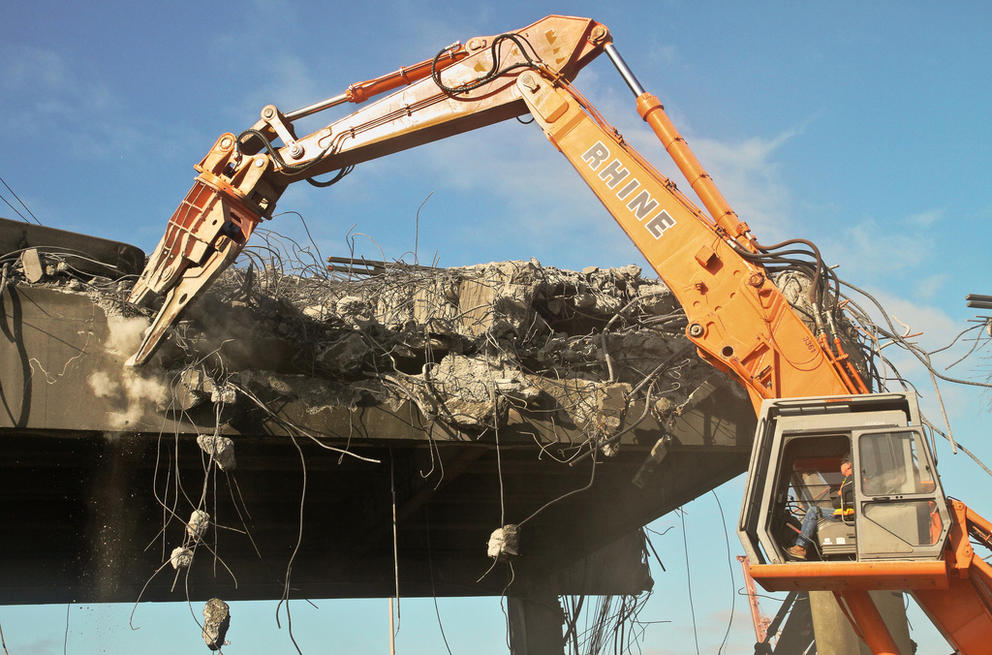Seattle’s current noise code dates back at least to the 1970s, when Seattle was much smaller and little was known about the health impacts of noise. But as Seattle undergoes explosive growth, residents are being exposed to some of the most chronically high noise levels from construction of any city in the nation.
Beyond the obvious annoyance of noise, chronic exposure has detrimental health effects, including temporary and permanent hearing loss, increased blood pressure, and increased risk of stroke. It is time to update the code to provide better protection to all residents.
The current ordinance allows noise-producing construction activity in non-commercial residential areas 7 a.m. to 10 p.m. on weekdays, and 9 a.m. to 10 p.m. on weekends and holidays. Noise levels cannot exceed 75 decibels, averaged over a one-hour period and measured 50 feet away. We compared Seattle’s noise ordinance to 33 other cities, and several points became immediately apparent:
1. Of the cities we've examined across the country, only Seattle and Houston allow construction to continue as late as 10 p.m., on any day of the week. In most cities construction must stop by 7 p.m. or earlier. This is generally a restriction on any after-hours construction activity.
2. Most cities do not allow construction on Sundays, and Saturday construction must stop by 6 p.m.
3. Only Seattle and San Diego measure averaged noise levels. Every other city on this chart with a noise limit uses a maximum level of 75-85 decibels produced by a single construction activity. For reference, commonly used belt sanders generate sound above 85 decibels at 50 feet away.
Construction of a new home, townhouse, or apartment building can take a year or more, and the health risks this can create regarding noise are not theoretical. Exposure to a noise level of 85 dBA for even one workday can produce hearing loss. Chronic exposure to noise levels as low as 65 dBA can increase adrenaline and stress hormone levels and elevate blood pressure, which increases the risk of heart disease and stroke. The Seattle Department of Planning and Development (DPD) website states there is a “bad risk of heart circulation disease at constant impact” at 65 decibels.
A recent epidemiological study in England showed that people exposed to chronic highway noise as low as 60 decibels had higher rates of hospital admissions for stroke, and higher mortality from all causes. These health risks increase with age and amount of exposure.
The already high level of construction activity in Seattle will increase further, now that the city council has approved the Seattle 2035 Comprehensive Plan. Because of this, it’s important to take a new look at the existing noise ordinance, which is outdated and inadequately protects Seattle residents. The city council and noise abatement office of DPD should revise the noise code.
A practical way of reducing the health impacts above is to decrease the cumulative amount of exposure to noise-producing activity. Seattle should follow other cities’ lead and set an earlier daily stop time for construction activity, say 6 p.m. Prohibiting non-emergency construction on Sundays and holidays should be considered; everyone’s ears and heart deserve a day of rest.
From the perspective of enforcement, it is more practical to prohibit construction activity after-hours than to monitor lower construction noise levels outside these time limits. The installation of noise barriers for sustained or repeated activity that will exceed 75 decibels on adjoining properties should be required as part of the permitting process.
Developers and contractors may object that these changes will increase the time required to complete projects. But these revisions will have an indirect positive effect of protecting their workers, who are most at risk from excessive noise exposure, presenting less liability for the employers.
Seattle residents already pay a price for the city’s rapid growth in traffic congestion, environmental and infrastructure impacts, and runaway housing prices. We should not also have to pay a less visible, but more pernicious, cost in our hearing and health.


